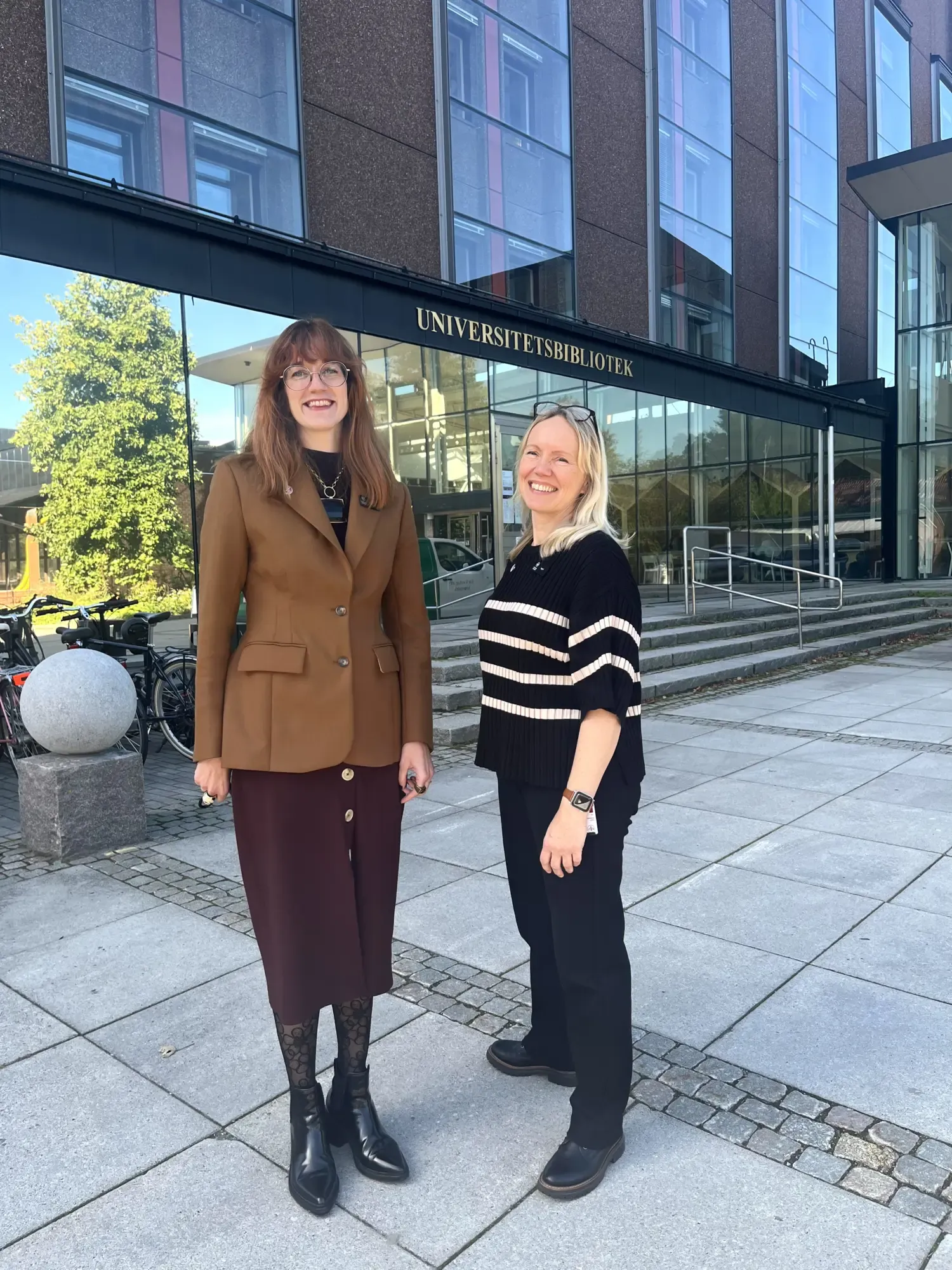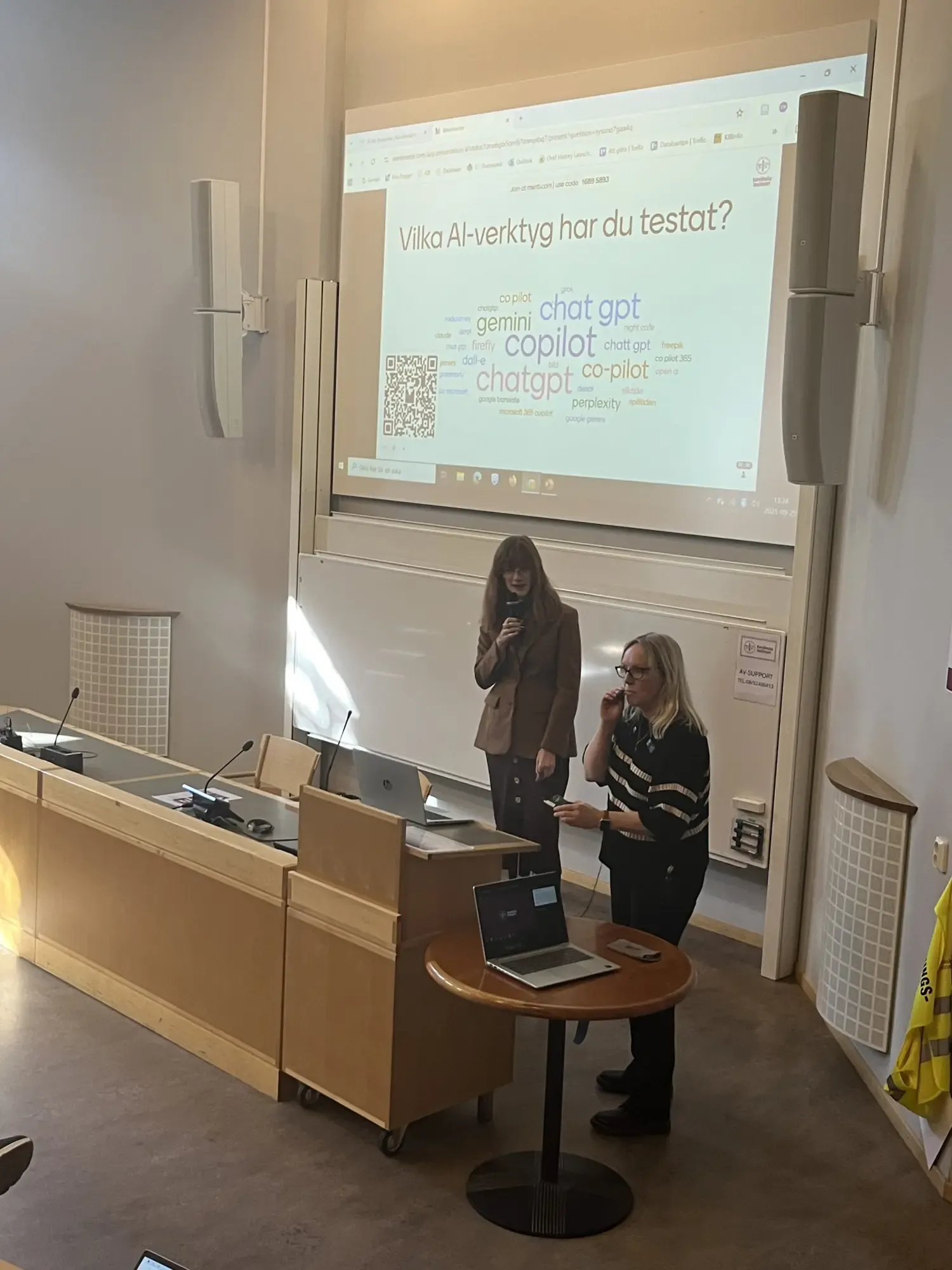AI for students – developed with users in mind
How can students develop the skills and strategies needed to navigate a world where generative AI is becoming an increasingly common part of their studies? That was the question the Karolinska Institutet University Library (KIB) was tasked with answering resulting in a new web resource on AI. Developed using user experience (UX) methodologies and agile work practices, the resource has been designed to meet the authentic needs of KI students.

Background and purpose
‘AI for Students’– a digital guide to generative AI during studies launched for the autumn term 2025 – was developed by KIB on behalf of the Committee for Higher Education.
KIB was commissioned to develop a digital resource offering KI students guidance and insights into the use of generative AI in their academic work. The objective was to strengthen student confidence in an increasingly AI-driven educational environment. The initiative has been carried out in close collaboration with programme and course coordinators, teaching staff, the Unit for Teaching and Learning, the IT Office and students, partly through the establishment of a dedicated reference group.
Working methods: UX and agile in practice
To really place student needs in focus, the project used UX methodology and agile working methods, and from the outset, students, teachers and other stakeholders at KI were involved.
- Engaging with users throughout each stage of the project was essential. Their perspectives often differ from your initial assumptions, and by actively asking questions and testing with the target audience, the final product is significantly improved, says project manager Ingrid Andersson.
The project began with interviews and online surveys among students and teachers to identify needs and experiences. It also included an overview of how other higher education institutions in Sweden and internationally are addressing the use of generative AI in higher education. Drawing on collected data, hypotheses were developed regarding students’ and teachers’ knowledge, attitudes, and needs in relation to AI. These were subsequently validated in collaboration with the reference group. Based on the hypotheses, prototypes for both the structure and content of the web resource were created and iteratively refined through multiple rounds of user testing.
- Throughout the project, we tested and developed the content step by step together with the target groups, Ingrid explains.
To ensure the resource addressed the needs of different students, the project team also developed so-called personas— a user-centered method where representative profiles of typical students are created, highlighting the varying motivations, levels of knowledge, and attitudes toward AI that students have.
- Using personas helped us maintain a clear understanding of our students, even during times in the project when we didn’t actually talk to them. It made it easier to create relevant and engaging content and ensure that the resource we created meets the needs of a broad spectrum of students, whether they are new to AI, skeptical about it, or already feel familiar with it.
"The most rewarding aspect of this type of assignment is being given the opportunity to work closely with users, in this case both students and teachers, and create services based on their genuine needs. This provides us with the right conditions to fulfil our mission at KI focusing on our core activities."

Insights and challenges
The project’s findings revealed significant variation in the levels of knowledge about AI among both students and teachers, as well as uncertainty regarding permissible use and how generative AI can be used responsibly in academia.
- Many students want to do the right thing but feel unsure about what applies. Others, more optimistic about technology, tend to use AI tools without reflecting on the consequences, says Hanna Frank, unit manager at KIB.
One of the key challenges during the project was allocating sufficient time for the project alongside regular work.
- The most crucial success factor in this project was the high level of commitment from the team and having staff with the right expertise in their respective areas. The working methods chosen for the project, UX methodology and an agile process, also created the right conditions for achieving a relevant and tailored final product, Hanna points out.
Use and further development
The resource is now available on KIB's website and is linked from other central webpages at KI. It is already being used in teaching and will be promoted throughout the autumn, as well as integrated into Canvas and other educational contexts.
- There is a strong demand for guidance on how to navigate AI, so our timing was perfect. We now look forward to evaluating the site and continuing its development in collaboration with users, Ingrid concludes.
KIB intends to monitor site usage and gather user feedback to ensure the content remains relevant as AI tools continue to evolve.
Key insights from the project
User-Centered Collaboration Drives Results
- Close and continuous collaboration with both students and teaching staff proved to be one of the most valuable and essential aspects of the project.
- Grounding the work in actual user needs created the right conditions to support KI’s mission and strengthen core activities.
UX and Agile Methods Enable Flexibility and Quality
- Continuous user input and early-stage testing allowed the team to iteratively refine the resource.
- Agile working methods enabled the team to respond quickly to emerging needs and adapt accordingly.
Commitment and Expertise Were Key to Success
- Strong engagement and the presence of the right competencies in each role were critical success factors.
- The team’s combined expertise ensured the delivery of a relevant, high-quality, and user-friendly final product.
